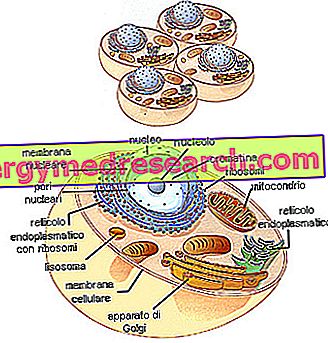What is plantar fasciitis
Plantar fasciitis is the most common cause of heel pain (tallonitis). It occurs mainly among athletes and is caused by the continuous repetition of excessive overloads on the foot.
To understand the causes of origin and the most useful treatments to treat plantar fasciitis, we must first take a quick look at the anatomy of the foot.
Arched Ligament
The arcuate ligament (or plantar aponeurosis ) is a robust fibrous band that joins the internal plantar area of the calcaneus with the base of the fingers. This ligament plays a very important role in the transmission of body weight to the foot during walking and running.
In particular, when the foot rises on the tips, detaching the heel from the ground (a typical gesture of running and jumping) the plantar aponeurosis undergoes a distension.

When the doctor diagnoses plantar fasciitis, the arcuate ligament has become inflamed due to overuse.
In the early phase, plantar fasciitis tends to involve the insertion of this ligament at calcaneal level causing pain in this area. Subsequently the pain tends to move towards the forefoot migrating along the whole plant and sparing only the tip of the fingers (distal phalanges of the foot).
Causes
Plantar fasciitis can arise due to innumerable factors, often combined together; flat or hollow feet, inadequate shoes (too wide or too narrow, too soft or too stiff), overweight, obesity, inadequate training and contraction or weakness of some leg muscles such as the calf, the peroneal, the posterior tibial and the extensors of the toes.
Diagnosis
Usually the diagnosis of plantar fasciitis is made after a careful clinical evaluation of the symptoms. Instrumental investigations, such as radiographs and CT scans are usually not necessary but may be useful to highlight or exclude further causes of heel pain (calcagral talus arthrosis, stress fractures, tumors, etc.).
Symptoms
To learn more: Plantar Fasciitis Symptoms
When a patient suffers from plantar fasciitis, the connective tissue that forms the arch of the foot disappears, degenerating and becoming inflamed. Both of these anomalies can make common activities like shopping or stairs quite painful.

In sport, pain usually arises in the initial warm-up phases and then disappears as training continues. In the sports field, cross-country runners, jumpers and soccer players are particularly at risk.
LESIVO MECHANISM: we have seen how the typical symptoms of plantar fasciitis are caused by the continuous repetition of microtraumas that affect the fascia "weakening it" little by little. At the base of this degeneration there is the loss of elasticity of the ligament associated with its excessive shortening. Whenever we extend our foot dorsally by lifting ourselves on the toes, the plantar aponeurosis is stretched. The extent of this stretching is greater the more the detachment is vigorous.
Ligamentous injuries are more likely the faster the traction force is applied. For this reason, following a strong pushing action on the forefoot, some fibers that form the fascia may break (due to excessive elongation). These injuries are usually imperceptible and not at all serious but they need quite a long time to be repaired. At this point it appears quite evident that the continuous repetition of microtraumas causes in the long run a degeneration of the ligament giving rise to plantar fasciitis. The most sensitive point to this type of injury is the calcaneal insertion of the aponeurosis which tends to become inflamed after degeneration causing the characteristic pain in the medial region (internal) of the calcaneus.
During the night rest the opposite situation occurs: the toes are relaxed and tend to look downwards. As a result the arcuate ligament tends to shorten. In the morning, as soon as you get up from the bed, the small movements of the foot require an elongation of the fibrous tissue which tends to remain contracted causing pain. The same movement slowly stimulates the lengthening of the plantar aponeurosis favoring the regression of pain.
Care and treatment »



